The Nuovo Devoto-Oli application in the Apple App store and two screenshots from the
Per dirlo in italiano section.
Background
We had an Italian monolingual dictionary mobile app, but one day it stopped working. Easy come, easy go. This forced us to start looking around for a new dictionary. We settled on the Devoto-Oli Dictionary. While on the expensive side (17 euros a year), I think if you are serious about learning the Italian language, this purchase is worth it. The app in the IOS/Google Play stores looks free, but we are not sure how much you can do without paying.
So what is this dictionary?
Il Devoto-Oli. Vocabolario della lingua italiana is a monolingual dictionary that is sold by
Mondadori Education. The Devoto-Oli dictionary first appeared in 1971 with continual updates. This dictionary is interesting because it captures words coming from other languages and technical terminology, as well as all the Italian words you would expect. The dictionary also gives a date to the first appearance of a word in the language, which is interesting.
As you progress in studying the Italian language, eventually you'll end up with a monolingual dictionary and Devoto-Oli is pretty good choice.
Besides Devoto-Oli, here are the other language resources we use often:
- Treccani – has web site and mobile app. Hand for in depth coverage of a word or concept.
- Dizionario Italiano Olivetti – only web. Includes sound clips.
- Word Reference – quick look ups and interesting language forums.
- ReversoContext – good for jogging your memory on phrasing, though you have to be careful with interpreting too much here.
English loan words
One of the first things we first noticed in the mobile Devoto-Oli app was a section called "
Per dirlo in italiano" where
loan words from English are discussed. Each loan word (e.g., "business") has a description with date of first use in Italian, how to use it in Italian, and what the gender is, which is kind of important for correct use. And, the audio clips for the loan words give an English pronunciation and an Italian one. Oh yeah, you'd be surprised how many times we are corrected on the Italian pronunciation of an English word by Italians. Also, each loan word gives very serviceable Italian words that can be used instead of the loan word.
Below we cover 10 English loan words
we commonly hear in Italian and that are discussed in the Devoto-Oli "
Per dirlo" section. This is just a small faction of what they cover. Our goal is not to replace the dictionary but to get you interested enough to buy it! We don't give a complete description of how each loan word is used, but enough to give you a sense. (Our usual disclaimer: we are not language teachers or linguists. We just like sharing our observations.)
In the brackets the following abbreviations are used – following what Devoto-Oli uses: s. (singular), m. (masculine), f. (feminine), o (or), invar. (invariant, doesn't change form), agg. (adjective), avv (adverb).
(1) background [s.m. invar.]
The word "background" entered into Italian in the middle of the 20th century and can be substituted with the Italian words
retroterra or
sfondo, depending on context.
Examples:
Lui ha sempre avuto un ottimo backdround tecnico. L'articolo esplora il background del razzismo in America. (2) business [s.m. invar., agg.]
"Business" entered into the Italian language at the end of the 19th century with a meaning of "economic activity", legal or otherwise. The Italian word
affare and various phrases using it (
giro di affari) can usually be substituted where "business" is used as a noun. For the compound word "businessman", you can use
uomo d'affari or
imprenditore. For "show business", you can use
mondo dello spettacolo. In
ellipsis uses, such as
viaggiare in business, there isn't always a great Italian word to use instead. For example, in the previous example "business" could mean first class as in
la prima classe or it could mean something different. In common usage, "business class" is written as
la business class, feminine, when it means
la prima classe.
When "business" is used as an adjective, substitutes in Italian exist but may be slightly less succinct. For example,
contratto business could be
contratto di affari or
contratto commerciale, without using "business".
Examples:
Il business della telefonia mobile è enorme. Questa è ottima posizione per il business e turismo. I parcheggio sono tra i business più redditizi.(3) e-mail [s.f. o m. invar.]
"E-mail" entered into Italian in the early 1990s. There are good Italian words to use instead of e-mail that are often used, including
posta elettronica,
indirizzo,
indirizzo di posta elettronica,
messaggio. Note that a
messaggino is a text message. Sometimes"email" is used for "e-mail".
The form "mail" is also used in Italian as an abbreviated form of "e-mail". While "e-mail" is given as masculine or feminine, "mail" is just feminine. The Devoto-Oli description of "mail" says it oscillated between the two genders and finished on feminine.
Examples:
Mandami una e-mail. No ho ancora ricevuto tua e-mail. Inviami la mail con allegato il documento Word. (4) look [s.m. invar.]
"Look" (appearance) translates to
aspetto, but somehow the English word seems sexier to use. It's been in the Italian language since 1970.
Examples:
Tagliandosi i capelli ha cambiato look. Lei ha un look classico. (5) meeting [s.m. invar.]
Devoto-Oli says the use of "meeting" dates back to the first half of the 19th century and was used to refer to a leader of a political rally (
comizio politico). Late in the 19th century, there was a derivative
meetingaio, someone who speaks at a political rally. Today, "meeting" is closer to how we use it in English.
Examples:
Mi dispiace, ma devo chiederti di annullare il meeting. Selezionare M per visualizzare i meeting disponibili. (6) mood [s.m. invar]
The word "mood" entered into Italian in the second half of the 20th century, along with other terms like feeling, relax, and stress. "Mood" can be translated as
stato d'animo,
umore.
Examples:
Non sono nel mood gisuto per uscire. I Mellow Mood sono un gruppo reggae italiano nato a Pordenone nel 2005. (7) okay [avv., agg. invar, s.m. invar.]
Devoto-Oli says tee word "okay" entered the Italian language in 1931. They give a brief note about the history of "okay" in the English language saying it possibly comes from the the "Vote for OK", a 1840 reelection slogan for Martin Van Buren, whose nickname was Old Kinderhook, abbreviated to O.K. But the
Wikipedia page for okay, says the reelection slogan likely used the already existing word.
Another curious fact given in the "okay" entry is that they mention the
Lessico di frequenza dell'italiano parlato (1993) – also known as
Corpus lip. In this corpus, the word "okay" represents a sixth of all the loan words used in Italian. So it's popular.
Examples:
Pensavo di aver sentito l'okay. Ci vediamo più tardi? Okay! Il motore è okay, a posto. (8) record [s.m. invar., agg. invar.]
"Record" has similar meanings in Italian as it does in English, a (musical) record or
registrazione, a min/max result as in a record time, a record of all accomplishments in sports, a record in a database, and the record button. An Italian word that could be used instead or "record" is
primato.
Examples:
Ha battuto il record mondiale a 150. Un record di 100 persone si è presentato al festa. Una produzione record pari a 1.500 tonnellate è stata registrata. (9) selfie [s.m. invar.]
The word "selfie" came into Italian in the early 2000s when phones appeared with front cameras. Go figure. Note that "selfie" is not the same as the Italian word
autoscatto, which refers to using a self-timer.
Examples:
Facciamoci un selfie? Fare troppi selfie nasconde una insicurezza psicologica? (10) top [s.m. invar. o s.f. invar.]
This short handy English word entered into Italian in the end of the 1950s. In English, we have many uses of "top" as a a noun (for example, "what a pretty top", "reach the top", "the top of the container"), as an adjective ("she's a top journalist"), or as a verb ("he topped the tree", "she topped the previous record"). "Top" in Italian is used just as a noun, with similar senses to English. All of these senses of "top" are used as gender masculine except when "top" is used as an abbreviation for top model.
Good Italian words to use instead "top" when it means figuratively or literally the top could be il
culmine, il
vertice,
l'apice, al
massimo. Or when "top" meaning a shirt,
camicetta scollata da donna sostenuta da spalline – okay, English wins here! When "top" is used in a compound noun in Italian there are usually good substitutes. For example, top class (
prima classe), top manager (
alto dirigente), top rate (
tasso massimo d'interesse), or top-secret (
segretissimo).
Examples:
Lui ha voglia di raggiungere il top. È una installazione di ricerca top secret. Quel nuovo top ti sta bennissimo.Sono una top (model), posso entrare in qualsiasi posto.









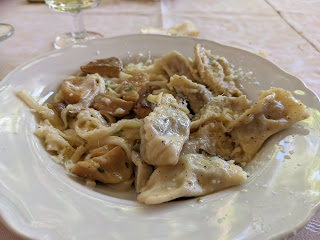





![[Adoxaceae] Viburnum lantana - Wayfaring Tree (Viburno lantana) [Adoxaceae] Viburnum lantana - Wayfaring Tree (Viburno lantana)](https://blogger.googleusercontent.com/img/b/R29vZ2xl/AVvXsEhhLE4RgKqM7OJTwHjDky7bvtoBwWaO5bcW4LHL3IJcvn2gdffe-UdMtW7cz2iP5EhH7ODopnol0Xxp8-vsJV0VhVHNizb7DM1vbHoMkjylOYUE7-5SVq2vFMQ2hRNzr93FLDRJijQ_BxA/s320/%255BAdoxaceae%255D+Viburnum+lantana.JPG)
![[Asteraceae] Centaurea nigrescens – Tyrol knapwee, Tyrol Thistle (Fiordaliso nerasto) [Asteraceae] Centaurea nigrescens – Tyrol knapwee, Tyrol Thistle (Fiordaliso nerasto)](https://blogger.googleusercontent.com/img/b/R29vZ2xl/AVvXsEhlUcyQ7LO5kPB6-UaVdnPWBIKDiBwR9YahRC02Qwr_qY0a70ksIDFugPu-u4e9CCzBGABnEgwhRILdofzzQmVcEH7reYLWnaJd2JWb5H-arTGUBIDzKUMfaMMqzu2nUXCxF_zUJc5Q4gs/s320/%255BAsteraceae%255D+Centaurea+nigrescens.JPG)
![[Asteraceae] Cichorium inthybus – Chicory (Cicoria selvatica) [Asteraceae] Cichorium inthybus – Chicory (Cicoria selvatica)](https://blogger.googleusercontent.com/img/b/R29vZ2xl/AVvXsEgC-UyEeq61GrLhy4mFCshF8BH-6csGBRdpkb-ZTpdHm7w3-r2z-4NG8u9Nf8ErQqlwJdY1JsEOKUBvabT7BOVlcSHJAJDO8h85KIbDpqFPq4cKSFh351YhY1Zo62S6qR2JuVnpygiOp3g/s320/%255BAsteraceae%255D+Cichorium+inthybus.JPG)
![[Asteraceae] Eupatorium cannabinum – Holy Rope, Hemp-Agrimony (Canapa aquatica) [Asteraceae] Eupatorium cannabinum – Holy Rope, Hemp-Agrimony (Canapa aquatica)](https://blogger.googleusercontent.com/img/b/R29vZ2xl/AVvXsEhbDZHMzzsAdkJTeIiCUDnIyt6dBCfbO_xak2DRxgHknsWjguWyT0Xt2F4JnK3YR0DKk8Xr-4aTejV2iTBOO4hg9dgbFnGDmO9gGJVVuAASZT53P2KhcMFdBbMkkUcWb4ZVuJ0b1ck2RLc/s320/%255BAsteraceae%255D+Eupatorium+cannabinum.JPG)
![[Caryophyllaceae] Dianthus superbus – Fringed Pink (Garafano superbo) [Caryophyllaceae] Dianthus superbus – Fringed Pink (Garafano superbo)](https://blogger.googleusercontent.com/img/b/R29vZ2xl/AVvXsEiigAEmtst04HEJjjyzInPVUSoA3KzTQ2yS-UzMlYsjDwIPDGuozAvKivbjfTZMeh360MBE06hpcTQ80h6r8Mlc-Q42TKluaM9WGbCVYNCeGl18Vnj1_NhRvT6oY3YJViJVS0lEhxSHabw/s320/%255BCaryophyllaceae%255D+Dianthus+superbus+1.JPG)
![[Caryophyllaceae] Dianthus superbus – Fringed Pink (Garafano superbo) [Caryophyllaceae] Dianthus superbus – Fringed Pink (Garafano superbo)](https://blogger.googleusercontent.com/img/b/R29vZ2xl/AVvXsEhTmDlRC_2ynZnDumQzJgRTnfXCkIZxLfcrAt4vwepNqY5aeTcAVrNxjKKdH8Rkvi7He_jTXsvAzeU4vQFiSgJdR24G1-gXpJ1DmcpvFded8CH37wkQEQyv1vOU-gP5O-t63349Mn17lh0/s320/%255BCaryophyllaceae%255D+Dianthus+superbus+2.JPG)
![[Lamiaceae] Salvia glutinosa - Sticky Sage (Salvia vischiosa) [Lamiaceae] Salvia glutinosa - Sticky Sage (Salvia vischiosa)](https://blogger.googleusercontent.com/img/b/R29vZ2xl/AVvXsEjfpgFgysdQ6CdGvlOYeQzzbTR6Al3dyCoJissjqBPvMeLbLHbQ-7FHSdW4B7qOzARHcoGOqtS9TBNVJ22SynW5bjoHSFBkFPn_J3r2c59h61fRutqN55XfW0N94Jun34QstN9TN0vB2yo/s320/%255BLamiaceae%255D+Salvia+glutinosa.JPG)
![[Liliaceae] Allium carinatum - Keeled Garlic (Aglio carenato) [Liliaceae] Allium carinatum - Keeled Garlic (Aglio carenato)](https://blogger.googleusercontent.com/img/b/R29vZ2xl/AVvXsEgc8I4AE7prMnWzW8xRNujPuMN-jQavgQyp2TokEFgdoqlZcrMY6RIg3cj2qYnQw8qf3naZ7dumkOruRbVK7j6Ozs1Qi1YV42w8NdEo8L_6qUYHwpHfkm8AVZiXpYq7bA-nAhw8Ye58bI8/s320/%255BLiliaceae%255D+Allium+carinatum.JPG)
![[Primulaceae] Cyclamen purpurascens – Cyclamen (Ciclamino delle Alpi) [Primulaceae] Cyclamen purpurascens – Cyclamen (Ciclamino delle Alpi)](https://blogger.googleusercontent.com/img/b/R29vZ2xl/AVvXsEgPrMA_ORLl0gOGPRGwth-1XeeYcJCm6ExhW5dK0v5t_7m0dkF92yCcPYDQaLYGVO72wjsDjLlkbnT_1-Nm0WobcQ9Y-G13olMH1A-htx-7sngaHYQjopNQJ6mP-RpmujD4nJzlsu9kTzk/s320/%255BPrimulaceae%255D+Cyclamen+purpurascens.jpg)
![[Scrophulariaceae] Verbascum sp. – Mullein (Verbasco) [Scrophulariaceae] Verbascum sp. – Mullein (Verbasco)](https://blogger.googleusercontent.com/img/b/R29vZ2xl/AVvXsEjfIjAeBy10pvpWPYMnFetGCpiHXbyE6wu5a06Wcvz6EXy620nztMei-V87pkbfzXxGlnhUqmQv65rd49SGeKh7YL2EPutYROY32JZQu-uAYgMO3WwBjyUV0H580b8cdZ8CaReye1ZVObY/s320/%255BScrophulariaceae%255D+Verbascum+sp..JPG)
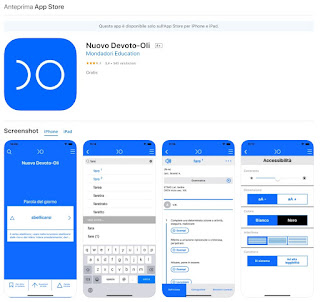





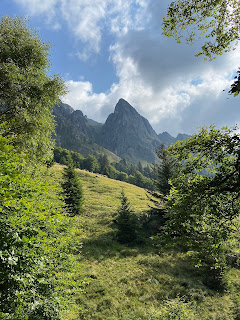



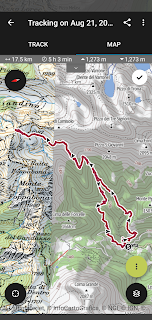


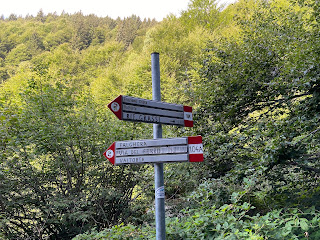












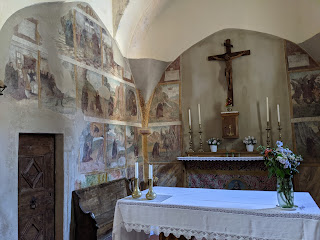










![[Asteraceae] unknown yellow flower. [Asteraceae] unknown yellow flower.](https://blogger.googleusercontent.com/img/b/R29vZ2xl/AVvXsEgueV-B1Pq2jDkRY1w_4zR2UH2bcvSCpnBB9a_8FLQYQoSgZOcbU5fhRnB09FKWyqNfJXyZVuMxyBuwIpz5WR0sozox_O8Vx-1EdISPRj9BL1UFomf8VTYSz7mBZbWRSUv0H4_q5cKaGAE/s320/%255BAsteraceae%255D+flower.jpg)
![[Asteraceae] Carlina acaulis – Stemless Carline Thistle (Carlina bianca) [Asteraceae] Carlina acaulis – Stemless Carline Thistle (Carlina bianca)](https://blogger.googleusercontent.com/img/b/R29vZ2xl/AVvXsEhKRLEcwfiDI66hXqui3sLUl4B6_mgizlufwaRLRyqmr-Jy2QaPLhyphenhyphen4Nb9cKrgyCpB8n4ouBYOzJ9cWSapKB0TDM0IRB9J_NvfF411aP-Vvkg1InDmxG4mYrbQU5Z6o66FrAa_gM0k57gg/s320/%255BAsteraceae%255D+Carlina+acaulis.jpg)
![[Asteraceae] Schlagintweitia intybacea – Whitish Hawkweed (Sparviere cicoriaceo) [Asteraceae] Schlagintweitia intybacea – Whitish Hawkweed (Sparviere cicoriaceo)](https://blogger.googleusercontent.com/img/b/R29vZ2xl/AVvXsEjTjwvl7cNPn5aM3clS0QRLImsQ_Nv-crALQDxBNaH6p3hMa53U-ppV97k7T9OpvAu9azNDfGy4InOqN5mnFAri8Mo9NEArwvIDxvYfaCPZknv2oGIy1Vffl9V6PVBBn8pMuTmouIw44s0/s320/%255BAsteraceae%255D+Schlagintweitia+intybacea.JPG)
![[Campanulaceae] Campanula sp. – Bellflower (Campanula). This is likely Campanula barbata – Bearded Bellflower. [Campanulaceae] Campanula sp. – Bellflower (Campanula). This is likely Campanula barbata – Bearded Bellflower.](https://blogger.googleusercontent.com/img/b/R29vZ2xl/AVvXsEihzfawdYLEjb5mePONOFHS7RZSO_hTtI8VL2-fL1vwKNxfu9KZuW5T2jo2j_5tKKvcNZe5f4k8Y6HOCzpiBV_0cSSJSFeZucQqdKrktpPviQIzh_RTW46sSMpcDuKZcasU5v0pEo3P69k/s320/%255BCampanulaceae%255D+Campanula+sp.jpg)
![[Caryophyllaceae] Dianthus superbus – Fringed Pink (Garafano superbo) [Caryophyllaceae] Dianthus superbus – Fringed Pink (Garafano superbo)](https://blogger.googleusercontent.com/img/b/R29vZ2xl/AVvXsEivO7PkBl996_MYfR3LRScFVgIce4RgNJoWgI14Up56ZGOBb5B6e61h-8gXUZ67DV8SfNbSmEXR6C-P03Fashf1AgfGJ5wd5pTGELGyaom6PGeASpPdx3Sq95oWXX3tjg0GTvkfAre5nqc/s320/%255BCaryophyllaceae%255D+Dianthus+superbus.jpg)
![[Celastraceae] Parnassia palustris - Marsh Grass of Parnassus (Parnassia delle paludi) [Celastraceae] Parnassia palustris - Marsh Grass of Parnassus (Parnassia delle paludi)](https://blogger.googleusercontent.com/img/b/R29vZ2xl/AVvXsEhTFLTHjvvjZ8k56kX22YOBxqWv_Gr0kKmCzTF9btIYo0fv9yju7PUZCicwOPZLZYeq-vHDrTnO2HMdF1mbcLvUIRCN8cFx5s7GrrF41DRWvTiZly6yP2pnhUO15-AxDkAJVaHKEVw7zCQ/s320/%255BCelastraceae%255D+Parnassia+palustris.jpg)
![[Ericaceae] Calluna vulgaris – Heather (Calluna comune, brugo) [Ericaceae] Calluna vulgaris – Heather (Calluna comune, brugo)](https://blogger.googleusercontent.com/img/b/R29vZ2xl/AVvXsEhbyc2db80RQtfdbM1FN9foor_Hu-8tgjDj-wBb2F5Kaar2b4R8DWXpL_RszcYD6cpUiKvgtfg4kWFRJEyWSKHyoEL7_Q-xKFic7-BD3Ow5FSdMWpyD_-KRQBUDGQrVf1_NsuF_ksFtBUo/s320/%255BEricaceae%255D+Calluna+vulgaris.jpg)
![[Fabaceae] Trifolium alpinum – Mountain Clover (Trifoglio montano) [Fabaceae] Trifolium alpinum – Mountain Clover (Trifoglio montano)](https://blogger.googleusercontent.com/img/b/R29vZ2xl/AVvXsEgcYf1y6zYWPpYFWAHt07DqhyGuxCojaQwUh8C9KZW2Oqs7U3DOHWp_oyflGS8zl0_J00qBxPC-USq2dh2ceaukwM-Kb4pPf3knX7z6TtOI9Sn_LC_Zg8j8nkZ3ff-hT13sNvVNT3X9dw4/s320/%255BFabaceae%255D+Trifolium+alpinum.jpg)
![[Fagaceae] Fagus sylvatica – European Beech (Faggio) [Fagaceae] Fagus sylvatica – European Beech (Faggio)](https://blogger.googleusercontent.com/img/b/R29vZ2xl/AVvXsEi5ucrZ-VIM7cVDTFCYIwOkZ_QOM_uZs3IFEbD4k8uwEHyHq9RnlsRBe_hi8dJN7tySZ8mGTxFA3UL_idO3MVhM2niYl44a_W6VcdQxWJI5e_M_vCVjbfkPHVlTtxl8LyryF-aUiB25ZFc/s320/Example+of+beech+forest+1.JPG)
![[Fagaceae] Fagus sylvatica – European Beech (Faggio) [Fagaceae] Fagus sylvatica – European Beech (Faggio)](https://blogger.googleusercontent.com/img/b/R29vZ2xl/AVvXsEiWV2MggMCnOiwrDDPRnE7jnO54wCy7uzEnYbwSxfOqyr-a7kp1O7w29DcNDigzWMqWpEWCnN15dax_PNk7zYopS0JRXOTAPuXuoH7aHlaK0cwPurgPQmaK1bgIHzCRSTIYc_Bu37icmO4/s320/Example+of+beech+forest+2.JPG)
![[Fagaceae] Fagus sylvatica – European Beech (Faggio) [Fagaceae] Fagus sylvatica – European Beech (Faggio)](https://blogger.googleusercontent.com/img/b/R29vZ2xl/AVvXsEjxRYuO2QJZV-Gj5c-0OcrfV3Uxoy5ZkYI5pTNLax7nD-iNWC3bHPl3Zt_-LaOmhdXO0GGYXDehlDNDfj3e1DgRlAYnIiECFrrsvF-bmW8r7kHQiCQ4O7GL_CV_Xp4mPKF6SA7Bt8fzl5Y/s320/A+beech+tree+above+Valtorta%252C+Italy.JPG)
![[Gentianaceae] Gentianella sp. – Gentian (Genzianella) [Gentianaceae] Gentianella sp. – Gentian (Genzianella)](https://blogger.googleusercontent.com/img/b/R29vZ2xl/AVvXsEhJBTsx2HURlRl_FzstnnnprARWOJ3NQmKW1wvqS21_HFh00x6XcSRZc4baFuAfxJ0uPU_DwLv51rncHVGH6MIfxUZBQqtZYeSyT5lRUiZvlS2f6zDkij3eefvdXlY6VlHu5a45TdzBmDA/s320/Gentianaceae%255D+Gentianella+sp.jpg)
![[Gentianaceae] Gentiana asclepiadea – Willow Gentian (Genzian di Esculapio) [Gentianaceae] Gentiana asclepiadea – Willow Gentian (Genzian di Esculapio)](https://blogger.googleusercontent.com/img/b/R29vZ2xl/AVvXsEjhiPi-GdmYAIREQF6CoYpTNVRhBJAlLv7MlKPbPgTb-NObnCkf_1nry9vO7VsmgtnvUu6gGkSf-hR2Xv9v9e1PzDyoARFLm2b2CVgT4moW6bauiW0vdt6Yke8Hpzd9n240VtY3OshVxws/s320/%255BGentianaceae%255D+Gentiana+asclepiadea+-+note+dotted+petals.jpg)
![[Gentianaceae] Gentiana asclepiadea – Willow Gentian (Genzian di Esculapio) [Gentianaceae] Gentiana asclepiadea – Willow Gentian (Genzian di Esculapio)](https://blogger.googleusercontent.com/img/b/R29vZ2xl/AVvXsEii4b-ZhSjdPsl_oC0yXKvyeUyvH0z4-pLBHYuravrKQPMgMkWdXi7DThTb0s3JWvenQNNAxsuByrqv4H4ElxTwzFC1J27tw76LLQ5axqqp9-m13yfx8KMj6pVkm0Nq1EJCTlT_lACKnoA/s320/%255BGentianaceae%255D+Gentiana+asclepiadea.JPG)
![[Lamiaceae] Prunella vulgaris – Selfheal (Prunella comune) [Lamiaceae] Prunella vulgaris – Selfheal (Prunella comune)](https://blogger.googleusercontent.com/img/b/R29vZ2xl/AVvXsEgkeFsJpnEuvuVU9GtYIc4SKMgqYl7Jr52NEr_Da89_gkqCX43lfubXSjvEEKGCGyYOyAakXqXClUnAU5rhNZ4J-nv1Kgzv5h8P4-091c0AOyBJIxDvLau795EcyoDwT0so8E5Hx-gpqMM/s320/%255BLamiaceae%255D+Prunella+vulgaris.jpg)
![[Orobanchaceae] Euphrasia sp. – Alpine Eyebright (Eufrasia delle alpi) [Orobanchaceae] Euphrasia sp. – Alpine Eyebright (Eufrasia delle alpi)](https://blogger.googleusercontent.com/img/b/R29vZ2xl/AVvXsEi0M2kCZKo6CQO8YdbMDt6LL083D0NYqQA5-Je1oqm8IFIDskDNsY2e7F2tMez7lsMOwPhrifTPwGmFVnhpMmYvI4wLkmsfpD0zo2lc-vF12FCvZIg1WUVT_euOgLg2BrHdRPF13zv7zbs/s320/%255BOrobanchaceae%255D+Eurphraisa+sp.jpg)
![[Orobanchaceae] Rhinanthus sp. – Rattle (Cresta di gallo) [Orobanchaceae] Rhinanthus sp. – Rattle (Cresta di gallo)](https://blogger.googleusercontent.com/img/b/R29vZ2xl/AVvXsEjLtKtSHAKBHEQJ6XSyr-0juY8V3EY3UPT3J8K7x9X826cgaEGFKlCwllk3eR_iEBCr97mioBv6DqJBWeU-rWwOzDq5cjJ_DgFxysKD0VWinjae8GEhy_OBG5vbupe5Rpx4kuEAWAKBg-w/s320/%255BOrobanchaceae%255D+Rhinanthus+sp.jpg)
![[Polygonaceae] Bistorta officinalis – Meadow Bistort [Polygonaceae] Bistorta officinalis – Meadow Bistort](https://blogger.googleusercontent.com/img/b/R29vZ2xl/AVvXsEhs319pzSHVLgvU7qjkwrRE4mFAA6qlq3ra9K7Y3oQAzp_Y0TDhLW3hCFjPkJ_y3ZmdhaSeuyUan1rg48cCRHDUNjaO8aY3HgYpPzqq65p7nmg7tc_syh3GDYJyfbKfGtEpxErg2Bvt9Pk/s320/%255BPolygonaceae%255D+Bistorta+officinalis.jpg)
![[Ranunculaceae] Aconitum napellus – Monk's Hood (Aconito napello) [Ranunculaceae] Aconitum napellus – Monk's Hood (Aconito napello)](https://blogger.googleusercontent.com/img/b/R29vZ2xl/AVvXsEieFzrrqX-dyXiZXHoIZ3QVx5gAjLIJA1JsnDcwLnZW3R0oIzKciKP2UCH5QOAnGReFEnWR4nOrA-3DyAchBavWO11EHcJ2GLEDbIUGZ32AMZczGtmh9FAVx_ShILLweekw0r_sSfFzYUI/s320/%255BRanunculaceae%255D+Aconitum+napellus+1.jpg)
![[Ranunculaceae] Aconitum napellus – Monk's Hood (Aconito napello) [Ranunculaceae] Aconitum napellus – Monk's Hood (Aconito napello)](https://blogger.googleusercontent.com/img/b/R29vZ2xl/AVvXsEhGaQVN8YB8Hr3218c5pGN2pxX1FKmr8vDHg59oH-ogqJSDVohphdoh5_JkbDjwoFksH8cvoDEvzAc6B2-11nLmXgNaVoiO0CXS4SGO0HBaoEHoZYpttBnvZvPQk-FW4F8ofrMX9aretfI/s320/%255BRanunculaceae%255D+Aconitum+napellus+2.jpg)
![[Ranunculaceae] Pulsatilla alpina – Alpine Pasqueflower (Pulsatilla alpina) [Ranunculaceae] Pulsatilla alpina – Alpine Pasqueflower (Pulsatilla alpina)](https://blogger.googleusercontent.com/img/b/R29vZ2xl/AVvXsEiCagOliGXi0fURywRb2nj1DnLmI2FJrHqrcj8OAeTqb9by7j9LOu0qWUszvevK-jNetTvq9cl-ChdtMLzIhKcalr91FZwZ7a2NIOIW1oXtHz-l2BXR8iP4ufK35vV6xDt3nt0hPNgHSo4/s320/%255BRanunculaceae%255D+Pulsatilla+alpina+-+bald.jpg)
![[Ranunculaceae] Pulsatilla alpina – Alpine Pasqueflower (Pulsatilla alpina) [Ranunculaceae] Pulsatilla alpina – Alpine Pasqueflower (Pulsatilla alpina)](https://blogger.googleusercontent.com/img/b/R29vZ2xl/AVvXsEizBSSZ-SgBbOVzyMAjhhWXuUmuWdyO-HdbNxxwSSv0CBbykJ7mBwWzmUkMUAqYvPRGFsbj5W0afFz2fZ3JgDwoouR9gByofuIKLIj_tc0kpk8nDV3CCVEVfY0mICd6_pGL3fgTZ3ZjBAU/s320/%255BRanunculaceae%255D+Pulsatilla+alpina+-+group.JPG)